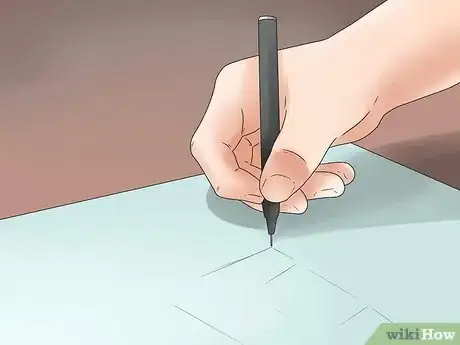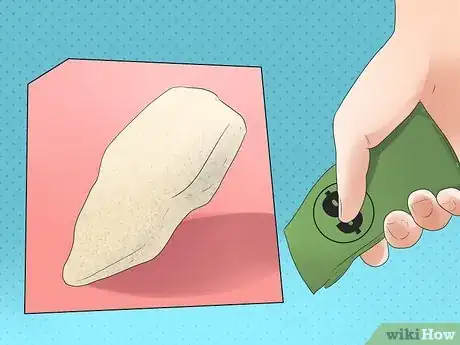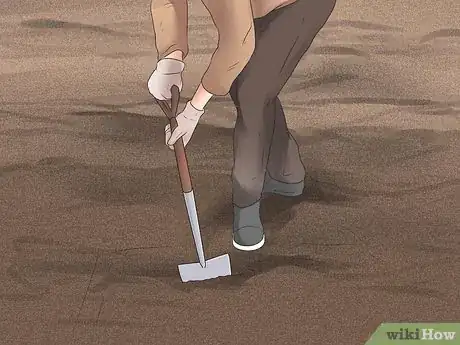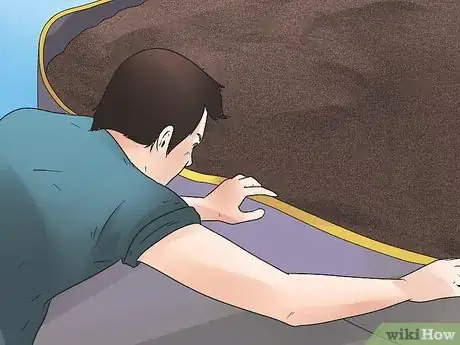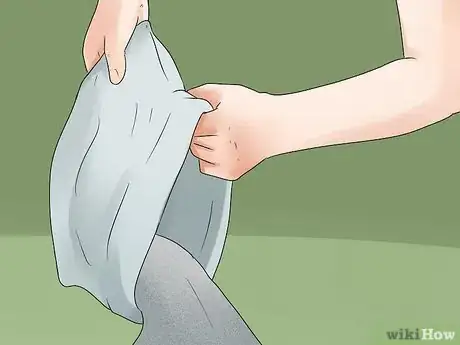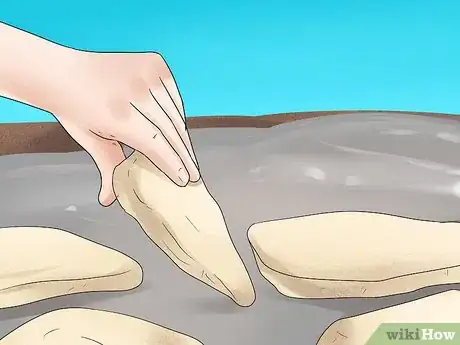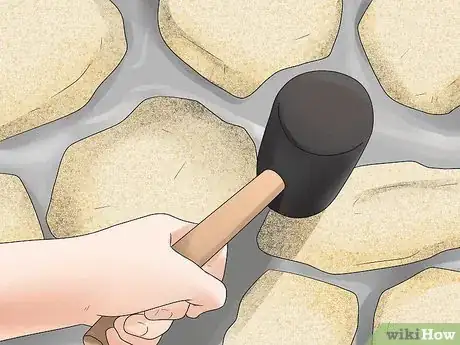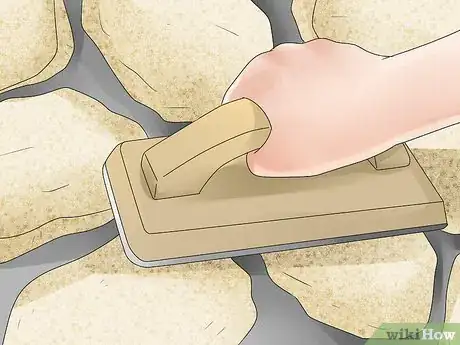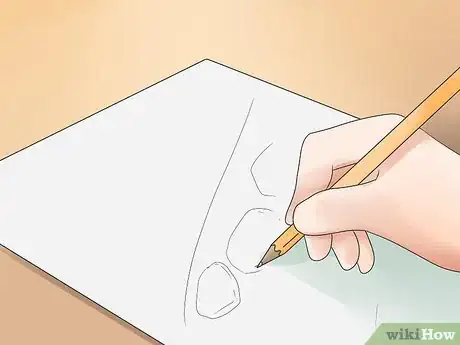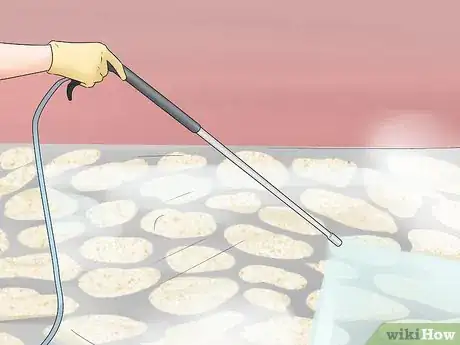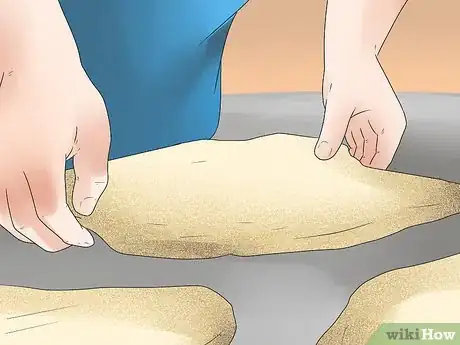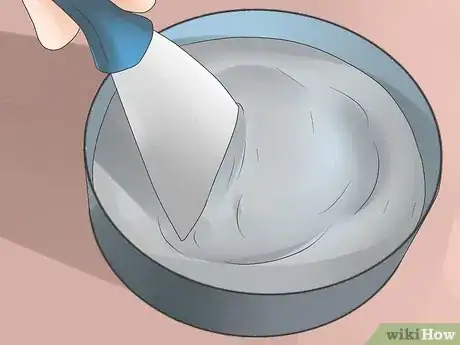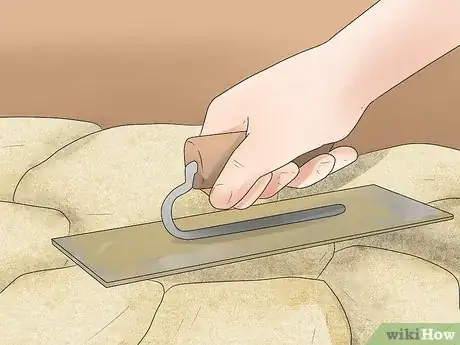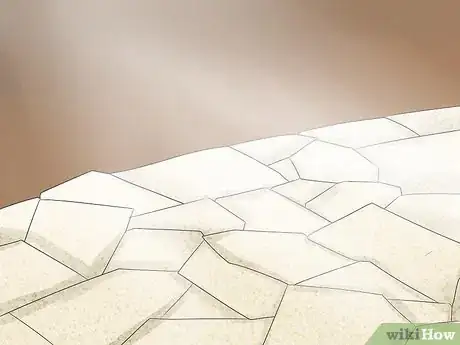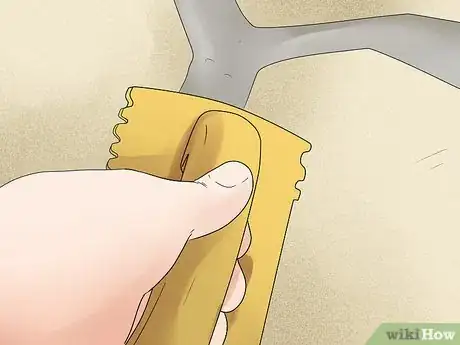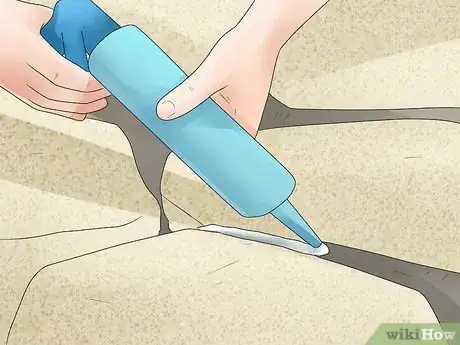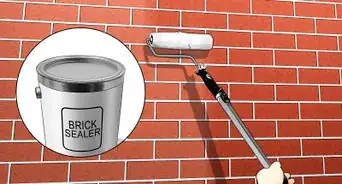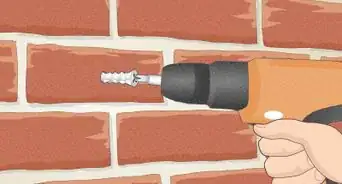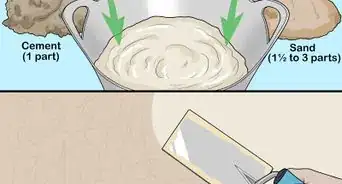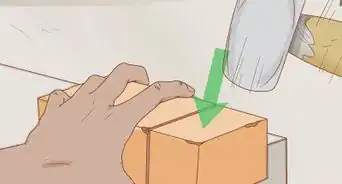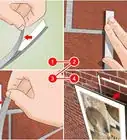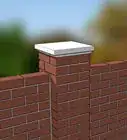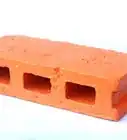This article was co-authored by Anthony "TC" Williams. Anthony "TC" Williams is a Professional Landscaper in Idaho. He is the President and Founder of Aqua Conservation Landscape & Irrigation, an Idaho Registered Landscape Business Entity. With over 21 years of landscaping experience, TC has worked on projects such as the Idaho Botanical Garden in Boise, Idaho. He is a Idaho Registered Contractor and a previously Licensed Irrigator in the State of Texas.
There are 9 references cited in this article, which can be found at the bottom of the page.
This article has been viewed 54,035 times.
Installing flagstone is good way to create a path or patio with an attractive natural look. Although flagstones can be frustrating to work with because of their lack of uniformity, the process is one that anyone can learn. There are two approaches to installing flagstones: dry-laying the stones is cheaper and easier, and ideal for creating a garden path or similar walkway, whereas mortaring your flagstones is more challenging and costly, but better for creating a large, durable surface such as a patio.
Steps
Installing Dry-Laid Flagstones
-
1Plan your project. To decide how much stone to buy, you'll need to calculate the square footage of the area you plan to cover. You'll also need to make sure your project is safe and legal before you expend your time, energy, and money on it.
- Start by consulting local building codes to make sure your planned project doesn't violate the law. This information should be available on your city government's website. If you build something that is in violation of local codes, you may be forced to remove it, or may be unable to rent our sell your home to others.
- It is also important to make sure there are not water or gas lines running near the surface in the area where you plan to lay your flagstone. You can call 8-1-1 to determine if this is a potential concern.[1]
- Use marking paint to draw an outline of the area you plan to cover on the ground. This will make it easier to take measurements. To find the total area, multiply the length of the area you plan to cover by the width.
-
2Purchase your flagstones. Once you've figured out how much ground you need to cover, you can calculate how much stone you'll need to buy.
- For flagstone that is an inch or less in thickness, one ton will cover 180 to 200 square feet. Typically, though, flagstone under one inch in thickness is not recommended as it may crack or break with too much weight or foot traffic.
- For flagstone that is an inch to an inch and a half thick, one ton will cover 90 to 100 square feet.
- For flagstone that is two inches or more in thickness, one ton will cover 70 to 80 square feet.
- It is a good idea to order about 10 percent more stone than you calculate you will need.
Advertisement -
3Dig out the foundation. Use highly visible marking paint or lay garden hoses out over the edges of the area you are going to excavate. Then, cut through the sod and roots along the inner edge of the hose using a flat-blade shovel or edger. Dig out the entire area.
- Depending on the thickness of the stones you plan to lay, you'll need to dig three to six inches down.
-
4Install the edging. To keep the edges of your foundation even, you'll need to line the sides of the excavated area with edging material. You can use treated lumber ("benderboard"), vinyl, steel, bricks, or carved stone. Steel spikes should be driven into the ground to secure flexible edging materials.
-
5Create the foundation. Your foundation should have three layers: landscape fabric, gravel, and sand.
- Landscape fabric prevents weeds and separates your foundation from the native soil. The edges of the fabric can be secured under your edging material.[2]
- Next, lay two to four inches of pea stone or small gravel. Tamp it down with a tamper to make it compact and even. Some people opt not to use gravel in their foundation. Gravel makes it easier for water to run off your path or patio, so it is highly recommended that you apply a layer of gravel if you live in a rainy area.[3]
- Finally, pour your sand. You should cover your foundation with one to two inches of sand and then smooth it out with a rake.[4] You may find wetting down the sand with a hose makes it easier to secure your flagstones.[5]
-
6Lay out your flagstones. Place your stones in the pattern you desire with the best-looking side up. Try to keep about the same amount of space between each stone.
- Begin by laying stones along the perimeter of the area you are covering, using pieces with edges that fit the edges of your path or patio, and work inward. This will reduce the number of stones you need to cut down to make them fit properly.
- Because of their stability, large stones should be placed near doorways and other heavily trafficked areas.[6]
- Stones that are too large or do not have the desired shape can be cut with a chisel and rock hammer.
- If your stones vary in width, you may need to add or remove sand from beneath some of them in order to get a level surface. Be sure your flagstone is smooth to avoid potential tripping hazards.
-
7Tamp the stones down. Use a rubber mallet to tap the stones into place one by one.
-
8Fill the joints between the stones. The final step is to fill the gaps between the flagstones, both to secure them in place and complete the aesthetic look of your path or patio.
- There are many options you can choose from for joint filler, including pea gravel, decomposed granite, or sand. You can also put topsoil between the stones and plant a ground-covering plant, such as wooly thyme or ordinary grass.[7]
- To fill your joints, just dump the filling material onto the flagstones and sweep it into the joints with a broom.
Installing Mortared Flagstones
-
1Plan, purchase, excavate and create your foundation. Follow the steps laid out in method one, up through step five, the creation of a gravel and sand foundation.
- To ornament an existing patio or path, you can also cover a pre-existing concrete slab with flagstones using the mortared flagstone technique. In this case, you can skip the excavation stage and just work on top of the slab.[8]
-
2Pressure wash your flagstones. A clean surface will ensure a better bond to the mortar.[9]
- If working on a concrete slab, pressure wash it as well.
-
3Lay out your stones and cut as necessary. Follow the same procedure detailed in step six of method one.
- Make certain you are satisfied with your layout. Once you start to put the stones in place with mortar, it will be very difficult to move them.
- If you are planning to fill your joints with grout or mortar, try to keep your joints narrow. If using sand or gravel, you can make the joints any size you find aesthetically pleasing. If using grout or mortar as joint filler, the flagstone surface will have a cleaner look and a smoother finish if you fit your stones together such that you keep the joints narrow and as uniform as possible.[10]
-
4Mix your mortar. Mortar is a mix of sand, cement, and water. You should mix two measures of sand to every one measure of cement. Then, slowly add water while stirring the mixture. Continue adding water until you get a consistency similar to cake frosting.[11]
- It's a good idea to mix up a small practice batch or two before you mix up a large enough batch to lay your stones.
-
5Lay your stones in a bed of mortar. One by one, lift each stone, apply mortar to your bed of sand and gravel or the concrete slab you are attaching your stones to, then set the stone into the wet mortar.
- If your stones are not of uniform thickness, you will need to apply additional mortar underneath some of them to get an even surface. In this case, start by identifying the thickest stone and mortaring it in first. Then, work outward from this stone, ensuring that each subsequent flagstone is about the same height.[12]
-
6Let it dry. Don't do anything else until your mortar is completely dry.
-
7Fill the joints. Fill the spaces between the flagstones with sand, gravel, additional mortar, or grout.
- Grout can be purchased at any home improvement store. Follow the instructions on the bag to mix the grout.
- Using a tool called a float, also available at your local home improvement store, press the grout between your flagstones, then immediately do a second pass with the float to remove excess. After the grout sits for 15-30 minutes, wipe up the remaining excess grout with water and a large sponge, changing the water often. Afterward, wipe the stones with a dry towel to remove remaining mud.[13]
- If you wish, you can change the color of your grout prior to application with mineral dyes (available at most home improvement stores) or even acrylic paint. It is recommended that you experiment with a small batch before dyeing the grout you'll actually use on your flagstones, in case you don't like the final look.[14]
- For sand or gravel joints, just pour the filler on your flagstones and sweep it into the joints with a broom.
-
8Seal the joints. If you used grout or mortar in your joints, wait for it to completely dry (this may take as long as a couple of days) and then cover them with a matte or glossy sealer (available at your hardware store). This prevents water and/or ice from getting into the joints and damaging them.[15] You can apply the sealer with cotton swabs or a disposable paint brush.
- If you used sand or gravel in your joints, there is no need to seal them.
- Sealing your joints is optional but highly recommended, especially if you live in a place that gets a lot of rainfall or cold winters.[16]
Warnings
- Do not excavate for your foundation until you have verified that you will not strike a gas or water line. It may not seem like you are digging deep enough for this to be an issue, but they can be buried shallower than you might think.[19] Aside from the costs you might incur for puncturing one of these lines, it creates a major fire risk.⧼thumbs_response⧽
References
- ↑ http://www.call811.com/
- ↑ https://www.sunset.com/garden/backyard-projects/instructions-how-to-flagstone-path#flagstone-path-wet-sand
- ↑ https://www.sunset.com/garden/backyard-projects/instructions-how-to-flagstone-path#flagstone-path-wet-sand
- ↑ https://www.sunset.com/garden/backyard-projects/instructions-how-to-flagstone-path#flagstone-path-wet-sand
- ↑ https://www.sunset.com/garden/backyard-projects/instructions-how-to-flagstone-path#flagstone-path-wet-sand
- ↑ http://www.landscapingnetwork.com/flagstone/installation.html
- ↑ http://www.landscapingnetwork.com/flagstone/installation.html
- ↑ http://articles.chicagotribune.com/2002-04-26/business/0204260018_1_flagstone-mortar-cement
- ↑ http://www.landscapingnetwork.com/flagstone/installation.html
- ↑ http://www.landscapingnetwork.com/flagstone/joints.html
- ↑ http://articles.chicagotribune.com/2002-04-26/business/0204260018_1_flagstone-mortar-cement
- ↑ http://articles.chicagotribune.com/2002-04-26/business/0204260018_1_flagstone-mortar-cement
- ↑ http://www.bobvila.com/articles/how-to-grout-tile/#.VGfocMnTdM0
- ↑ http://www.mosaicartsupply.com/mosaic-grout.aspx
- ↑ http://www.landscapingnetwork.com/flagstone/installation.html
- ↑ http://www.landscapingnetwork.com/flagstone/installation.html
- ↑ http://www.landscapingnetwork.com/flagstone/installation.html
- ↑ http://www.popularmechanics.com/home/how-to-plans/masonry/4315657
- ↑ http://www.atcogas.com/Safety/Safety-Education-and-Resources/Documents/Safety_Resources_LocateMarkings.pdf
About This Article
To install flagstones, starting by digging out the area you're going to excavate, digging 3-6 inches down depending on the thickness of your flagstones. Then, install edging, like treated lumber, vinyl, or bricks, around the sides of the area so the edges are even. Next, put down landscape fabric, followed by gravel, and finally sand to make the foundation for the flagstones. When you're finished, lay out the flagstones in your desired pattern and tamp them down with a rubber mallet. Finally, fill in the joints between the stones with gravel, granite, or sand. To learn how to install mortared flagstones, scroll down!
